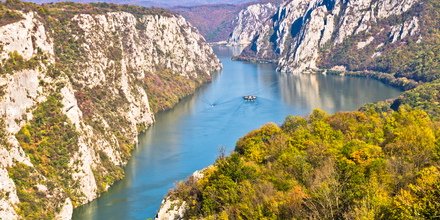Biodiversity
Our Work
Latest in Biodiversity
-

Natura 2000 and Jobs – Scoping the Evidence
The European Natura 2000 network provides job opportunities in sectors ranging from conservation and restoration, agriculture, forestry, fisheries to tourism, recreation, and health.
-
Nature, Health and Jobs: IEEP at Green Week 2015
Drawing on recent work by the Institute, IEEP’s Patrick ten Brink will present at Green Week 2015 on Jobs & Growth through Green Infrastructure (3 June 2015 - 16:30-18:00, Session 2.2) and on Health and Social Benefits of Nature and Biodiversity Protection (4 June 2015 - 09:30-11:00, Session 3.3).
-
Finland launches its ecosystem service assessment
Finland joins the ranks of countries that have carried out a dedicated assessment of their ecosystem services. Like similar studies elsewhere, the assessment concludes that ecosystem services underpin the country’s social and economic well-being and should therefore form the basis of the transition to a green economy in Finland.
-
The value and social significance of ecosystem services in Finland (TEEB for Finland)
TEEB for Finland presents the results of a national assessment of the socio-economic importance of ecosystem services in Finland. It provides a review of the country’s most relevant ecosystem services while also considering opportunities and tools for their sustainable management.
-
Guidance handbook for financing Natura 2000
An updated ‘Financing Natura 2000 Guidance Handbook’ aims to inform national stakeholders about opportunities for financing the management of Natura 2000 sites through various EU funds during the 2014-2020 period.
-
Greener Britain: Practical proposals for party manifestos from the environment and conservation sector
A coalition of the UK’s leading environmental groups, including IEEP, is calling for all political parties to commit to a greener Britain by 2020 by pledging seven major priorities to reform the way we use energy, build communities and protect nature.
-
On the path to a circular economy
Read the lastest edition of our newsletter for our views on the circular economy package and much more.
-
Transforming our approach to water and wetlands
Thursday 12th December: IEEP and UNEP are hosting two webinar discussions on the values of water and wetlands and how to mainstream these values into policy-making in order to promote wise use and management.
-
Assessing the social and economic benefits of protected areas in Europe
A webinar on social and economic benefits of protected landscapes was organised by Europarc Atlantic Isles on 20 November. IEEP’s Marianne Kettunen kicked off the event by a European overview and some key considerations of assessing benefits in practice.
-
Social and Economic Benefits of Protected Areas
A new book by IEEP researchers offers a comprehensive introduction to the socio-economic benefits of protected areas and provides step-by-step guidance on identifying, assessing and valuing the various benefits they provide.
-
Sectoral resource mobilisation to implement global biodiversity targets
There is an urgent need to find sufficient resources to enable developing countries to implement the global targets for biodiversity by 2020. Financing the conservation and sustainable use of biodiversity from different sectoral funding flows can complement global biodiversity financing.
-
New book coming soon: Social and Economic Benefits of Protected Areas
A new book by IEEP researchers will be published on 15 August offering a comprehensive introduction to the socio-economic benefits of protected areas and providing step-by-step guidance on identifying, assessing and valuing the various benefits they provide.
-
Incorporating biodiversity and ecosystem service values into national strategies and action plans
This guidance document has been prepared to support practitioners of National Biodiversity Strategies and Action Plans to update their plans to incorporate biodiversity and ecosystem service values. Six in depth country case studies provide common lessons of good practice.
-
Webinar: Incorporating biodiversity into national strategies and action plans
IEEP has just produced a roadmap and guidance document to help practitioners to incorporate biodiversity and ecosystem values into their NBSAPs. See case study examples and tune into the webinars on June 5 and 7.
-
Socio-economic importance of ecosystem services in the Nordic countries
New TEEB-inspired regional assessment (published on 31 January) shows that nature and its ecosystem services are of high socio-economic significance for the Nordic countries. In order to be truly sustainable, Nordic economic systems need to build on a more comprehensive appreciation and understanding of the value of natural capital.
-
What do we mean by Green Economy?
What is the Green Economy? What policy actions can contribute to achieving it? And how have EU-funded research projects supported these actions?
-
Green Economy in the European Union
Elements of the green economy concept are relatively well integrated in EU strategic documents - but the focus is on achieving green/sustainable growth, rather than achieving a ‘green economy’.
-
Nature and its role in the transition to a Green Economy
Published timely before the Rio+20 Conference, this executive summary of a paper by IEEP highlights the role of nature in the transition to a green economy.
-
The Green Economy and Natural Capital
It’s time to account for the value of ecosystems and biodiversity in a Green Economy, this is IEEP’s message for the Rio Earth Summit.
-
European Parliament report on sustainable competitiveness and innovation
The CAP could, and should, be primarily to assist EU agriculture to become more internationally competitive and sustainable and to achieve this by innovation. It already has many instruments to do this, and the reforms could further assist. However the resources deployed could be far better used.
Highlights
-

Sectoral resource mobilisation to implement global biodiversity targets
There is an urgent need to find sufficient resources to enable developing countries to implement the global targets for biodiversity by 2020. Financing the conservation and sustainable use of biodiversity from different sectoral funding flows can complement global biodiversity financing.
